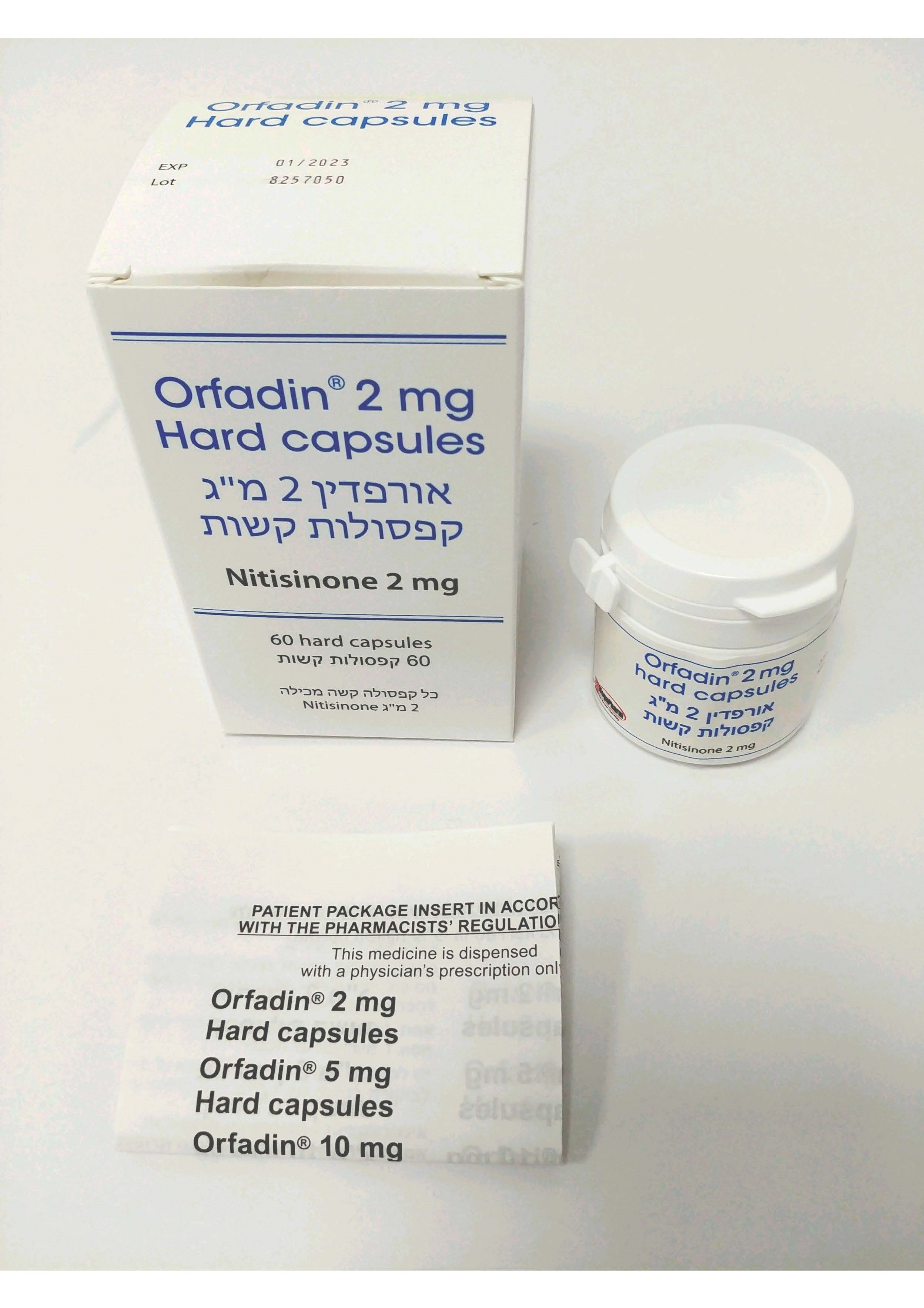Quest for the right Drug

אורפדין 2 מ"ג קפסולות קשות ORFADIN 2 MG HARD CAPSULES (NITISINONE)
תרופה במרשם
תרופה בסל
נרקוטיקה
ציטוטוקסיקה
צורת מתן:
פומי : PER OS
צורת מינון:
קפסולה קשיחה : CAPSULE, HARD
עלון לרופא
מינוניםPosology התוויות
Indications תופעות לוואי
Adverse reactions התוויות נגד
Contraindications אינטראקציות
Interactions מינון יתר
Overdose הריון/הנקה
Pregnancy & Lactation אוכלוסיות מיוחדות
Special populations תכונות פרמקולוגיות
Pharmacological properties מידע רוקחי
Pharmaceutical particulars אזהרת שימוש
Special Warning עלון לרופא
Physicians Leaflet
Adverse reactions : תופעות לוואי
4.8 Undesirable effects Summary of the safety profile By its mode of action, nitisinone increases tyrosine levels in all nitisinone treated patients. Eye-related adverse reactions, such as conjunctivitis, corneal opacity, keratitis, photophobia, and eye pain, related to elevated tyrosine levels are therefore common. Other common adverse reactions include thrombocytopenia, leucopenia, and granulocytopenia. Exfoliative dermatitis may occur uncommonly. Tabulated list of adverse reactions The adverse reactions listed below by MedDRA system organ class and absolute frequency, are based on data from a clinical trial and post-marketing use. Frequency is defined as very common (≥1/10), common (≥1/100 to <1/10), uncommon (≥1/1,000 to <1/100), rare (≥1/10,000 to <1/1,000), very rare (<1/10,000), not known (cannot be estimated from the available data). Within each frequency grouping, adverse reactions are presented in order of decreasing seriousness. MedDRA system organ Frequency Adverse reaction class Blood and lymphatic system Common Thrombocytopenia, disorders leucopenia, granulocytopenia Uncommon Leukocytosis Eye disorders Common Conjunctivitis, corneal opacity, keratitis, photophobia, eye pain Uncommon Blepharitis Skin and subcutaneous Uncommon Exfoliative dermatitis, tissue disorders erythematous rash, pruritus Investigations Very common Elevated tyrosine levels Description of selected adverse reactions Orfadin hard capsules treatment leads to elevated tyrosine levels. Elevated levels of tyrosine have been associated with eye-related adverse reactions, such as e.g. corneal opacities and hyperkeratotic lesions. Restriction of tyrosine and phenylalanine in the diet should limit the toxicity associated with this type of tyrosinemia by lowering tyrosine levels (see section 4.4). In clinical studies, granulocytopenia was only uncommonly severe (<0.5x109/L) and not associated with infections. Adverse reactions affecting the MedDRA system organ class ‘Blood and lymphatic system disorders’ subsided during continued Orfadin hard capsules treatment. Reporting of suspected adverse reactions Reporting suspected adverse reactions after authorisation of the medicinal product is important. It allows continued monitoring of the benefit/risk balance of the medicinal product. Any suspected adverse events should be reported to the Ministry of Health according to the National Regulation by using an online form https://sideeffects.health.gov.il.

פרטי מסגרת הכללה בסל
התרופה תינתן לטיפול בטירוזינמיה תורשתית מסוג I.
שימוש לפי פנקס קופ''ח כללית 1994
לא צוין
תאריך הכללה מקורי בסל
10/01/2012
הגבלות
תרופה מוגבלת לרישום ע'י רופא מומחה או הגבלה אחרת
מידע נוסף
